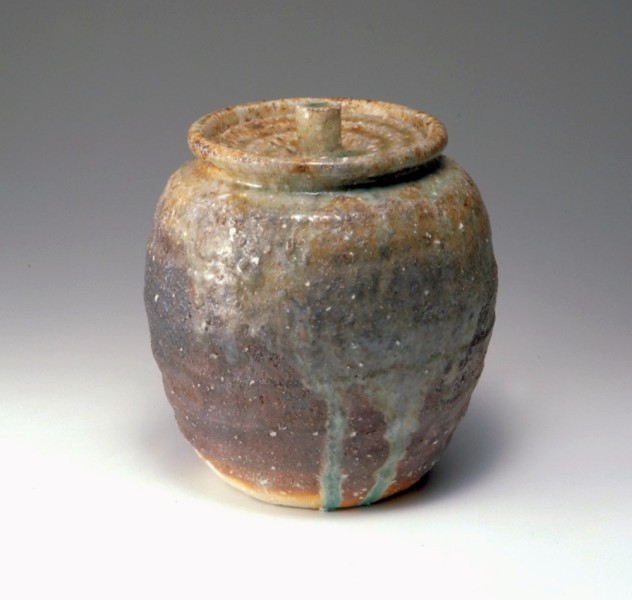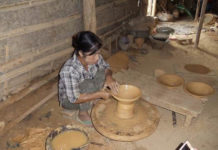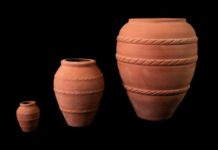The origins of this ware date back to sometime between the second half of the seventh century and eighth century A.D. At the time, a type of earthenware called sueki was being fired and in the early days, seed pots used by farmers were being made. Subsequently, however, it seems that temple roof tiles were produced.
Much later on during the Momoyama period (1573-1600), when the tea ceremony had become popular with the warrior class, the name of iga-yaki associated with tea bowls in particular became well-known throughout the land, due in no small part to the fact that the feudal lord of the Iga Ueno clan was very knowledgeable about tea and pottery. From the beginning of the Edo period (1600-1868), the thickness of this ware was reduced under the tea master Kobori Enshu and called Enshu Iga. By the eighteenth century, the foundations of the present-day production centre for iga-yaki were established.
More robust than shigaraki-yaki that is made in a neighbouring district, iga-yaki is also slightly heavier. Various changes take place during firing to produce variations in colour and shape according to how the kiln is fired. This ware is characterised by its yohen (“happy accidents”) such as the production of a glaze with a glass-like quality (bidoro) and surface stains from the firing as well. Everyday pieces of tableware are now made alongside traditional pieces of earthenware, flower vases and teacup and pots.
First, the dry clay is broken down as-is, and then it is dissolved in water, then strained. Sometimes tiny white stones are added. The resulting clay is formed using a potter’s wheel, coil work, or slab work. Then, the surface is marked with cloth, a spatula, or other tools before bisque firing, then it is painted and glazed before a final firing.
Iga-yaki is traditionally produced in Iga, Mie, former Iga Province, central Japan. Masters include Furutani Kazuya, Fujioka Shuhei, Tanimoto Yoh, Tanimoto Kei and Kishimoto Kennin.
This entry is referenced from the website of The Association for the Promotion of Traditional Craft Industries.





